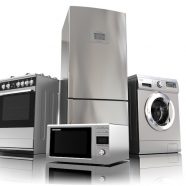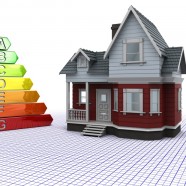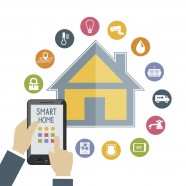How the Internet of Things is Changing New Home Construction
The Internet of Things (IoT) is a pretty bad name for a pretty great set of systems designed to save the average homeowner time and money. When new construction electrical plans include extra time and materials to incorporate smart home technology, it’s a smarter fit than waiting until the technology improves and the homeowner wants to retrofit. Add it into your original home plans, because this technology is only getting more popular.
What is the Internet of Things?
Call it the IoT, smart home technology, or computerized systems, it all means the same thing: a collection of appliances and devices that use wireless technology to speak to each other. This allows for easier maintenance, alerts that prevent expensive accidents, and even big savings on power and even grocery bills. Some of the more popular Internet of Things home additions are:
- Smart TVs. This is probably the most common and well-known example of the technology. Smart televisions allow you to stream movies and television shows, play games, surf the internet, and even download technology updates, right from your television screen. Some can self-diagnose a problem, and all will alert you when they need an update.
- Computerized Refrigerators. They may have seemed a huge indulgence when they first came out, but refrigerators with a computer inside actually make a lot of sense. When kept up-to-date, the inner list function can alert you when you run out of crucial grocery items, preventing wasted time and money. They can also alert you when the temperatures fluctuate, indicating a possible expensive repair problem and enabling you to get it fixed before the problem grows larger.
- Smart HVAC Systems. These environmental systems can sample the air outside and keep track of weather reports to adjust the quality of air inside your home. Electronic thermostats adjust the heating and cooling to make sure each room of your house is at the optimum temperature, no matter what time of the day. Some systems can even be segmented into room-by-room sections and adjust the temperature as needed if the rooms are occupied or empty.
- Smart Lighting. The more smart lighting you have throughout your home, the more money you’ll eventually save on maintenance costs. All electrical systems need to be regularly maintained, but with smart lighting your system can be monitored remotely, with the electrical contractor only coming out when he’s really needed.
- Security. Homes have had security systems installed for decades, but the Internet of Things makes them more accurate and responsive. They’re more able to distinguish between benign visits and criminal occurrences, and can be better embedded into your whole house system, making them more difficult for criminals to shut down.
Installing Internet of Things Technology
All IoT systems rely on wireless connections or local area networks (LANs) for communication. This means installing more robust wiring throughout the house to allow current and future connections to take place. When you compare the cost and trouble of tearing down walls and rebuilding after rewiring, there’s no question that it makes sense to incorporate this technology into new construction electrical plans. Even if you don’t think you’ll ever have any need for smart home technology, having your electrical contractor in south Florida and it makes good financial sense. Most homes are resold eventually, and having your building wired and ready for the Internet of Things can be an impressive selling point for many new buyers.
Read MoreSmart Homes: Safety and Security Options to Protect Your Family
Smart homes have been a major trend over the past few years, and the trend towards transforming our living spaces and bringing the internet of things into our homes won’t be going anywhere this year. In fact, there are some pretty amazing new electrical protection gizmos and gadgets that you can expect to see a lot more of this year, including:
- Facial recognition software. What used to be the preserve of spies and government agencies has gone mainstream, and new video surveillance technology for homes includes software that can recognize whether the person who entered your home is family or a stranger, and will tell you as much on your smartphone!
- There are also products on the market that can differentiate between humans, pets and other types of motion, which means fewer false alarms on your home security system.
- Smart garage doors are another trend this year, with products now available that allow you to retrofit your existing garage door opener to talk to you, also via your smart phone.
- Monitor, turn on, turn off and check in on appliances thanks to technologies from major manufacturers like LG, that let you check in on your gadgets from the office or the other side of the planet. Oh, and while you’re at it, consider switching your fridge for one that shows you what’s inside without having to open the door. Opening and closing refrigerators can waste a lot of power if you’re someone who can never find what they’re looking for!
- Voice recognition, fingerprint activated locks and wearables that tell you when someone has entered your home by vibrating are all security features that we are going to see more of this year and beyond.
- CO2 and gas alarms on your smart phone, as well as the alarm unit itself. Why wait to get home and discover a problem, when your home can let you know before there’s a major problem?
- There’s even a system that can detect leaks and mold in the walls of your home, using your existing wiring as a sensor network. Talk about safe and secure homes! Not even fungus gets past the new technologies!
- Baby monitors have gone high tech too, with wireless pan, tilt and zoom cameras replacing nanny cams and baby monitors, but if you do opt for this type of camera, make sure that you pay close attention to network security. After all, major online security companies have specifically identified cameras as a weak point for hackers.
- Finally, there are a range of products designed to make sleep safer, from crib units that alert you when a toddler has escaped, to beds that track kids’ sleep patterns.
There’s no denying that the smart home offers unparalleled levels of electrical protection this year, and whether you’re looking to go high tech or just upgrade your home security system a little, it’s a good idea to talk to an electrician in South Florida about your plans. They can help you decide what’s possible with your existing wiring, or what changes need to be made.
Read MoreHow to Make Your Home a High Performance Electrical Superstar
High performance homes are in big demand. People love to buy these types of homes, because they know that a certified high performance home will have the best heating and cooling efficiency, the best ventilation, and the best electrical efficiency. Many new homes are built to high performance standards from day one, but it is possible to retrofit too.
If you want to make your home a high performance superstar, there are a few steps you can take to make positive changes to your power consumption.
Get a RESNET Approved Contractor
The first step in transforming your home into a finely tuned electrical machine is to find a contractor who is RESNET approved. RESNET is the umbrella body that manages the HERS (Home Energy Rating System), and ensures that contractors who are performing HERS construction or upgrades are following best practices. There is a handy search function on their website, to help you find a contractor in your area.
Getting Your HERS Rating
Often, when working with an existing building, the first step in transforming your house into an energy efficient home is to get your HERS rating. This is a number, based on a variety of energy related factors, which indicates how energy efficient or otherwise your home is. It is a number that will either be above or below 100 (which is the benchmark for HERS ratings.)
If your home has a rating below 100, then that means it is more energy efficient than average, while ratings above 100 are less efficient.
Knowing where your home falls on the spectrum is important, so that your contractor can determine what changes need to be made to make your home as efficient as possible.
Improving Your HERS Rating
There are several things you can do in your existing home to make it more energy efficient, and to improve your HERS rating. Here are a few very simple changes that can make a big difference:
- Switch out appliances for energy efficient ones. If your appliances are older, chances are they are not as efficient as they could be, and you could save a considerable amount of energy by using newer, Energy Star rated ones instead.
- Upgrade lighting to be energy efficient. Switch out fixtures for LED or CFL friendly versions, and trade your regular garden lights for solar powered versions.
- Improve your insulation. Even though you probably do not need the heating benefits in Florida, you can cut your cooling bill considerably, including the power required to run your air conditioning units.
- Replace windows with energy efficient versions. These windows have an invisible film on them that prevent the entry of a percentage of solar rays into your home. Again, this can make your home cooler and save energy and money.
- Upgrade your water heater and fix dripping faucets. You may not think that plumbing upgrades would affect power consumption, but since heating water is a big chunk of your power bill, changes like this can improve your energy consumption and rating significantly.
There are many reasons to upgrade your home and improve its HERS rating. You can inspect and improve electrical protection at the same time, you will save power, and your home will be more energy efficient and less hard on the environment.
Read MoreNew Construction: Wiring a Smart Home for the Future
Ideally, new homes are built for the future as well as for today. If you’re building a new home, you’re probably planning on staying there for years, if not decades. We’ve gone through a massive surge in electrical and data improvements in the last decade. The next ten to twenty years promise to show us even more. It’s harder to play catch-up if you don’t have the base materials installed. We have no way of knowing exactly what appliances we’ll be using in twenty years, so the smartest move is to include basic variable options in your new construction electrical plan.
Read More




Recent Comments